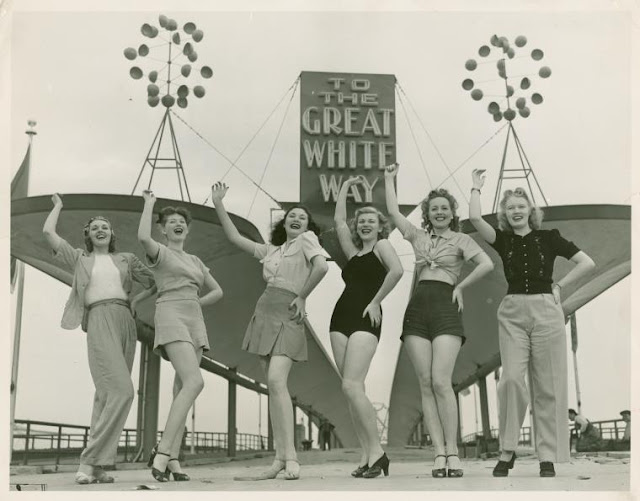The Fair was, of course, intended (originally at least) to be uplifting, educational, and inspirational. According to most authoritative accounts, the Amusement Zone was only admitted to The Fair rather late in the game, when organizers realized that if they wanted to attract the crowds they hoped for, they would have to include something to appeal to the baser instincts. The Amusement Zone (dubbed "The Great White Way") was segregated from the main Fair grounds, and most amusements required additional admission.
But there were other entertainments to be enjoyed that were perfectly in keeping with the vision of The Fair's creators. For a number of years I had heard (read, really) that the documentary films "The City", "The Plow That Broke The Plains", and "The River" were shown at The Fair, but I could never confirm this detail. Well, after a little bit of research at The New York Times, I was able recently to determine that these films, along with a few others, were, in fact, screened as part of The Little Theatre Film Program in the Science and Education Building, located right next to the statue of George Washington at the very center of The Fair.
 |
| See Today, 1pm for Showtimes |
And guess what? These three films are available on DVD. A fourth, Let My People Live, can be seen and downloaded here. So you can program your own Fair Film Festival!
I have to confess, though. As interesting and as important as these films might be as historic documents, as examples of documentary filmmaking, they're pretty dry, pretty tough to sit through. No wonder Fair-goers needed to take a parachute jump, or enjoy some "Living Magazine Covers"!
 |
| A still from The Plow that Broke the Plains |






















































